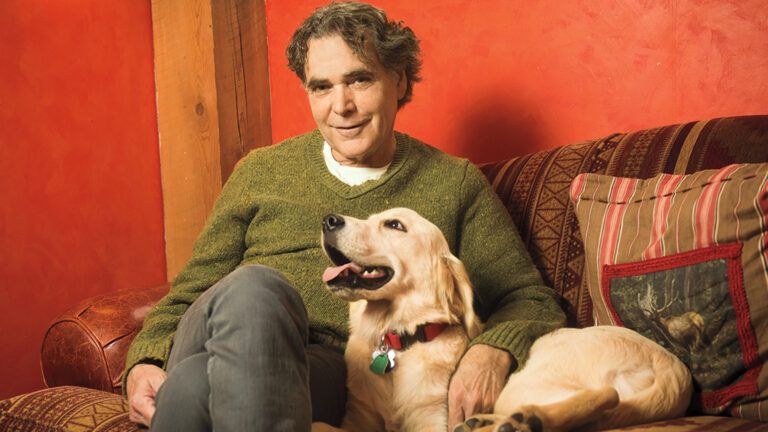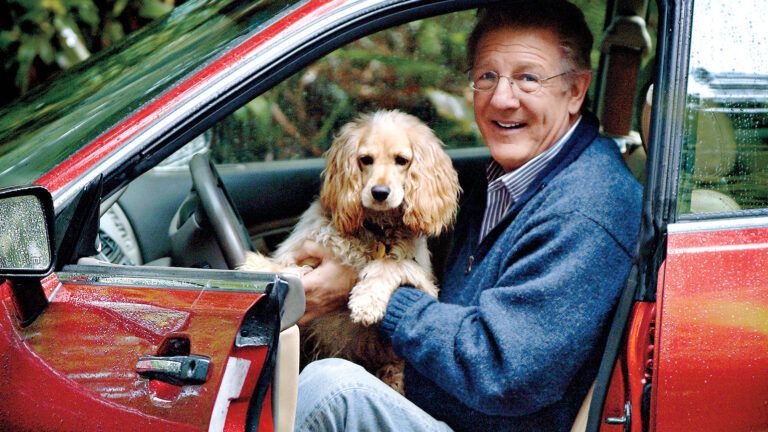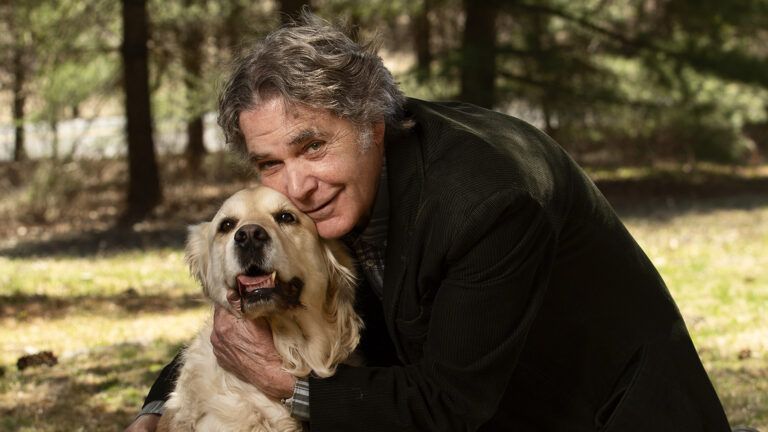My wife and I adopted a Chihuahua with a bright white spot on her back, whom we named Nuala (pronounced noo-luh, short for Fionnula, an Irish name meaning “white shoulder”).
In addition to the white spot, Nuala has another unusual marking—or pair of them, to be exact: two symmetrical black streaks just above her shoulder blades.
Nuala’s a young dog, and her coat is still changing. The longer she stays with us, the more pronounced the marks are becoming. “They look a lot,” my wife pointed out recently, “like wings.”
Nuala may be the first dog I’ve ever had with visible wings, but as every dog owner knows, there’s something angelic about all canines. Like angels, dogs watch out for us with a love that is completely unqualified. Speaking metaphysically, they do so from a different direction, of course.
The traditional Christian view sees animal creation as directly below the human, just as the angelic level is directly above it. But the devotion dogs show us has a touch of the divine about it all the same.
So much so that sometimes, in the course of the long, rich history of the human-dog relationship, those traditional categories get blurred, and it becomes hard to say whether one is talking about a dog, an angel or both.
Consider—at the opposite end of the canine spectrum from Nuala—a dog named Grigio. Enormous and formidable-looking, Grigio (the word means “gray” in Italian) was the loyal companion of Saint John Bosco, a beloved priest who lived in Turin, Italy, in the 19th century.
Don Bosco, as he was often called, grew up in a poor peasant family and spent his young years as a shepherd. Determined to devote his life to God, Bosco triumphed over the enormous odds against someone from his low social position and was ordained in 1841 at the age of 26. Turin’s newly industrialized streets swarmed with unfed and unloved boys at that time, and Don Bosco set out to help them.
Like that of many a saint, Don Bosco’s life was full of miraculous events. Time and again in the course of his work for the urchins under his care, God would intervene at the last minute to keep the oratory, the ever-imperiled home he ran, in operation.
Bosco was also guided by intensely vivid dreams—dreams in which, Bosco felt, God spoke directly to him. So vivid were these dreams, in fact, that he would sometimes wake up after a night of them more tired than he’d been when he went to bed.
But of all the unusual events in Don Bosco’s life, none is more celebrated than the appearance of Grigio. Bosco’s work frequently took him into Turin’s worst neighborhoods—places where not everyone appreciated his charitable efforts. One night, as Bosco made his way through a particularly nasty part of town, a large dog emerged from out of the shadows.
Bosco quickly realized the animal meant him no harm, and the two walked the rest of the way home together. When he reached the door of the oratory, the dog disappeared into the shadows as quickly as it had appeared.
So it went from then on. Time and again, Grigio would appear out of nowhere and walk along by Bosco’s side as he went about his errands through the darkened streets of Turin. Several times, when Bosco was menaced by thieves, Grigio would show up just in time and, like a comic-book superhero, send them running.
Grigio seemed to know John’s schedule better than John himself. And he certainly knew the schedule of those out to do him harm. “One night,” writes Bosco biographer F. A. Forbes, “instead of accompanying Don Bosco, Grigio went to the oratory and refused to let him go out, lying down across the door of his room, for once growling and showing ill-temper when John made the slightest attempt to dislodge him.”
Don Bosco’s mother took a dim view of his dangerous journeys and knew very well what the dog was getting at. “Don’t go out, John,” she said. “If you won’t listen to me, at least listen to that dog; he has more sense than you.”
Don Bosco relented and stayed home. Later on that evening there was a knock at Bosco’s door. It was a neighbor who’d come to warn Bosco that he’d overheard two rogues nearby, planning to ambush him as soon as he left the oratory.
Grigio’s exit from Don Bosco’s life was as sudden as his appearance from out of the shadows. Again, according to F. A. Forbes, Bosco was on his way to see friends in the town of Moncucco, just outside the city of Milan, when it began to grow dark.
I wish I had Grigio here, Bosco thought to himself.
“As if the wish had suddenly produced him,” Forbes writes, “Grigio appeared with every sign of delight at meeting his friend and walked the whole way with him.” When Don Bosco reached his destination and sat down to supper, Grigio lay at his feet.
“But when Don Bosco rose to give him some food, he was not to be seen. That was the last of Grigio. The enemies of the Saint had grown tired of plotting against him.”
Was Grigio a flesh-and-blood dog or an angel in disguise? Either way, I like to think that as we journey through our own lives there’s a little of Grigio in all of the dogs who keep us company—from the largest to the tiniest.
Download your free ebook Angel Sightings: 7 Inspirational Stories About Heavenly Angels and Everyday Angels on Earth.




